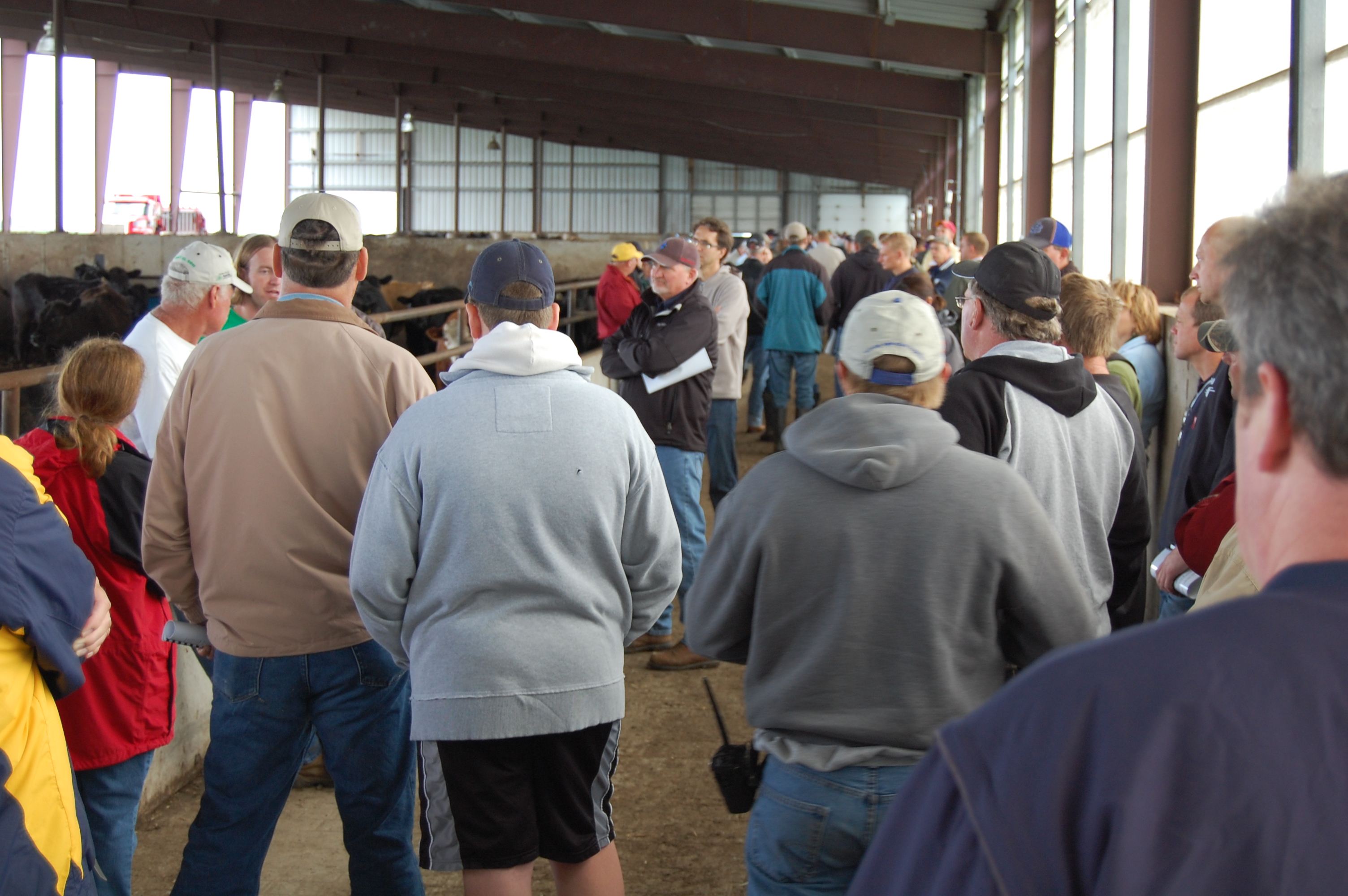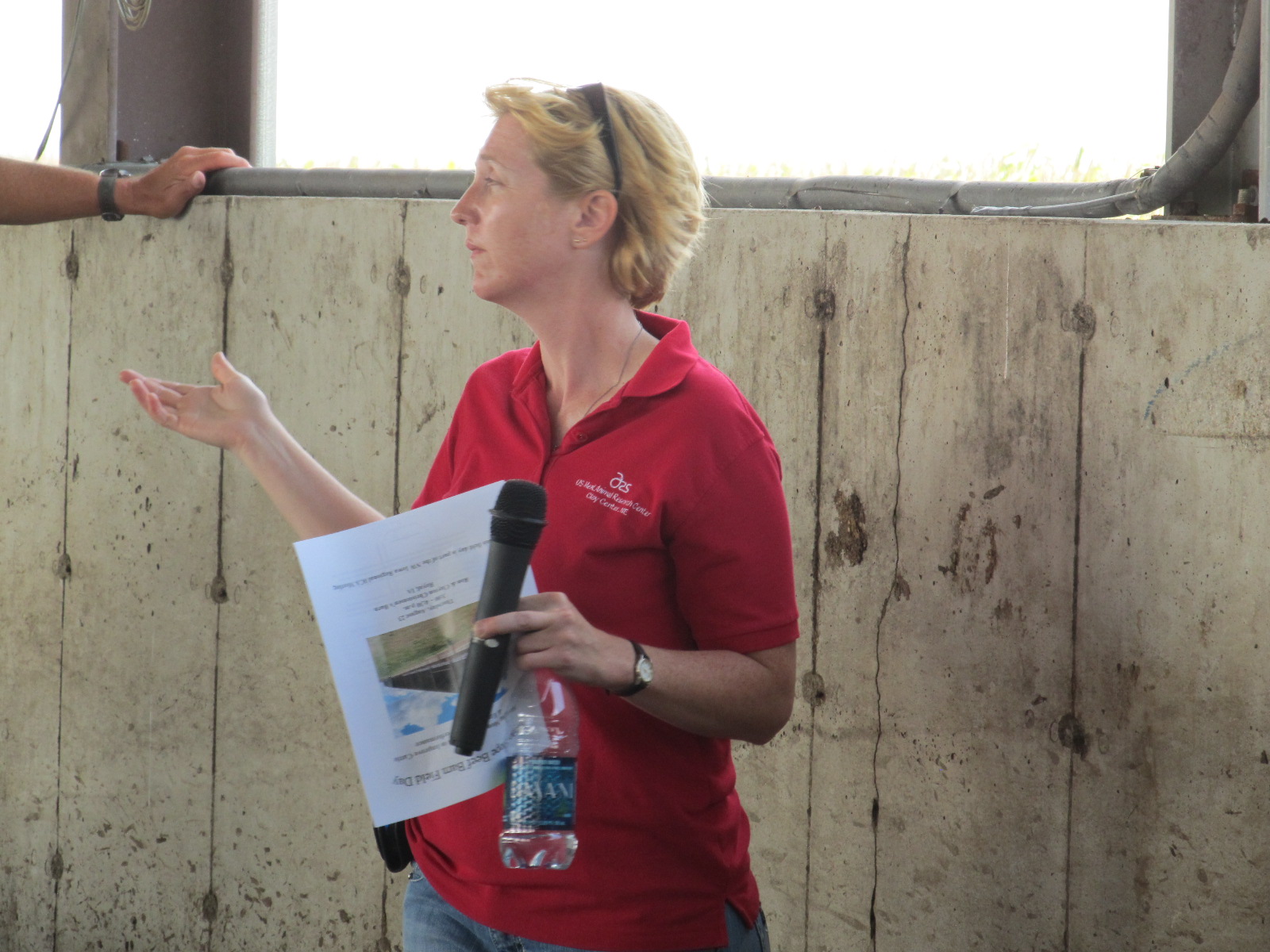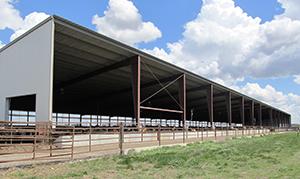 Researchers and university specialists from USDA’s Meat Animal Research Center (USMARC), South Dakota State University, and Iowa State University recently finished a four-year study looking at mono-slope beef barns and how to improve cattle and environmental performance.
Researchers and university specialists from USDA’s Meat Animal Research Center (USMARC), South Dakota State University, and Iowa State University recently finished a four-year study looking at mono-slope beef barns and how to improve cattle and environmental performance.
How Do Mono-slope Barns Stack Up For Air Quality?
A research team worked for three years to gather baseline data for the levels of gas emissions from mono-slope beef barns. The study involved a total of four mono-slope beef barns in South Dakota and Iowa. Researchers also evaluated two different manure-handling systems to determine if there are any differences in gas emissions.
The results of that study are summarized in a eight-page publication “Air Quality in Mono-Slope Bedded Beef Barns“. They measured ammonia, hydrogen sulfide, methane, carbon dioxide, and nitrous oxide. The first three are the primary focus of the publication, since those are most commonly associated with beef feedlots. Also discussed are impacts of building orientation, manure-handling system, pen density, bedding type, and curtain opening (ventilation).
Beef Facilities Conference
Over 300 people attended the November, 2013 conference on beef confinement buildings held in Sioux Falls, South Dakota. The recordings and written papers are linked below.
Environmental and Regulatory Aspects of Beef Barns
The page numbers next to each are the location of companion written papers in the Beef Facilities Conference proceedings.
- Results of Air Quality Research on Mono-slope Bedded Beef Barns – pages 5-9.
- Air Quality Regulations and implications of the air quality research project – pages 10-17
The third presentation focuses on manure and nutrient production, and nutrient management for manure produced in these systems.
- Capturing, managing, and using nutrients from the barn – pages 18-21
Producer Panel – Virtual Tours
Four producers shared aspects of their different building designs including ventilation, manure management, what works well, and things they would change. Their summaries are on pages 22-26 of the Beef Facilities Conference Proceedings.
- Hoop buildings – one farm tour and a short synopsis of different building designs in use in Iowa
- Mono-slope buildings – narrow and wide designs
- Slatted floor barn (with rubber mats) – originally built without mats
Cattle Performance and Comfort In Beef Barns
University specialists compared feed intake, animal performance, carcass characteristics, and management considerations with barns compared to other systems. The page numbers next to each are the location of a companion written paper in the Beef Facilities Conference Proceedings.
- Comparing open lots, partially covered lots, and bedded mono-slope facilities – pages 27-29
- Comparing hoop barns and a semi-confinement facility- pages 30-32
The third presentation looks at international and domestic research into the use of rubber mats in deep pit barns with concrete slats.
- Rubber mats compared to uncovered concrete slats in deep pit beef barns – pages 33-37
Webcasts
Two live webinars were recorded and archived. The presenters included researchers, extension specialists, and farmers.
- Mono-Slope Beef Barn Design and Management – Basics on the design of barns and “virtual tours” from two farmers who utilize these in their beef production systems.
- Results of the Mono-slope Beef Barn Air Quality Research Project – This webinar was the first of several resources on this page discussing the results of the multi-year, multi-state research into the air emissions. | Related: PDF publication Air Quality in Mono-Slope Bedded Beef Barns | Beef Facilities Conference recordings | Waste to worth conference proceedings
Open Houses Provide Opportunities to Learn More
 |
| It was standing room only as participants listened to station presentations in the alleyway of the mono-slope barn. |
As part of the outreach plan for this project, a series of open houses were scheduled to inform cattle producers, regulatory and technical agency staff, Extension employees, service providers and legislative and local policy-makers about air quality management and manure and environmental issues with these facilities.
Over 200 people from Iowa, Minnesota, South Dakota and Nebraska attended the Mono-Slope Beef Barn Open House in June of 2011. The open house was hosted by Ron and Clayton Christensen of Royal, Iowa and featured barn and manure management, cost-sharing opportunities, the tri-state air quality project and environmental regulations.
The open house was organized by ISU Extension and Outreach, SDSU Ag and Biosystems Engineering, and the USDA Meat Animal Research Center at Clay Center, NE. Sponsors included Animal Medical Centers of Spencer, Clay County Cattlemen’s Association, Clay County Farm Bureau, Coalition to Support Iowa’s Farmers, Farm Credit Services of America -Emmetsburg, Spencer Ag Center and Spencer Chamber of Commerce Ag Committee.
A second open house was hosted in South Dakota in August of 2011. The open house was hosted by Goodwin Heritage Cattle Company, with approximately 125 people in attendance from South Dakota and neighboring states. Sponsors included Coteau Hills Cattlemen’s Association, Watertown Chamber of Commerce Ag Committee, SPN & Associates, Glacial Lakes Energy LLC., Landmark Builders Inc., South Dakota Farm Bureau, Ag United for South Dakota, Banner Associates and Form-A-Feed, Inc.
As a result of the two open houses:
- 95% had a better understanding of the air quality regulations and why this research is needed*
- 88% learned where they could find financial resources to construct a mono-slope barn*
- 89% had improved knowledge about how gases and dust are measured*
*Based on 19.7% participation in a short survey after each open house
Learn more about the successes of these open houses.
A facility tour, Science Behind Environmental Policy, was held June 22, 2012 in NW Iowa. This tour was attended by state and federal legislators, state policy makers and stakeholders representing Extension and university specialists. Enthusiasm for research efforts was proclaimed by the legislators. See what they learned.
NW Iowa cattlemen listened to Mindy Spiehs, researcher with USDA ARS Meat Animal Research Center at Clay Center, share progress about the Tri-State Air Quality Project. The update and tour at the Christensen barn were part of a NW regional meeting sponsored by the Iowa Cattlemen’s Association on August 23, 2012.
 |
| Mindy Spiehs talks about the Tri-State Air Quality Project. |
Waste to Worth Conference Presentations
In April, 2013 researchers presented air emissions results from this project at the Waste to Worth: Spreading Science and Solutions conference in Denver, CO. These proceedings include a short written paper, recording and links to additional information. The different aspects presented were:
- Manure management and temperature impacts (Cortus)
- Ammonia and greenhouse gases (Ayadi)
- Particulate matter (Spiehs)
The above proceedings compliment the Beef Facilities Conference recordings and webcasts on the research project (both further up on this page).
Acknowledgements
This page was developed as a part of the Monoslope Beef Barn Air Quality Research project that was funded by Agriculture and Food Research Initiative Competitive Grant no. 2010-85112-20510 awarded to South Dakota State University, USDA ARS U.S. Meat Animal Research Center, Iowa State University, and University of Nebraska – Lincoln from the USDA National Institute of Food and Agriculture. For more information about the research study, contact Erin Cortus erin.cortus@sdstate.edu or Mindy Spiehs mindy.spiehs@ars.usda.gov. For more about the outreach and extension, contact Beth Doran doranb@iastate.edu.





